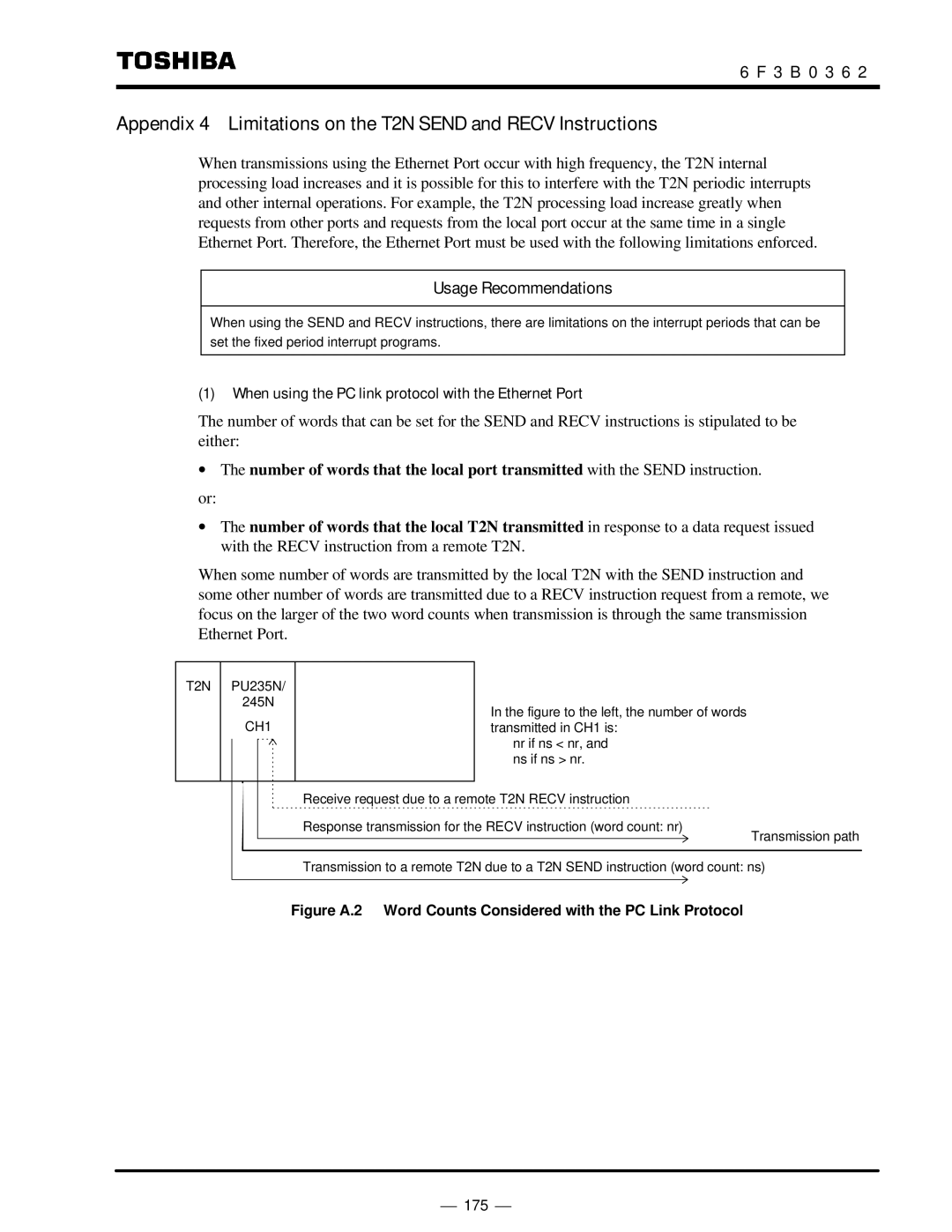
6 F 3 B 0 3 6 2
Appendix 4 Limitations on the T2N SEND and RECV Instructions
When transmissions using the Ethernet Port occur with high frequency, the T2N internal processing load increases and it is possible for this to interfere with the T2N periodic interrupts and other internal operations. For example, the T2N processing load increase greatly when requests from other ports and requests from the local port occur at the same time in a single Ethernet Port. Therefore, the Ethernet Port must be used with the following limitations enforced.
Usage Recommendations
When using the SEND and RECV instructions, there are limitations on the interrupt periods that can be set the fixed period interrupt programs.
(1)When using the PC link protocol with the Ethernet Port
The number of words that can be set for the SEND and RECV instructions is stipulated to be either:
∙The number of words that the local port transmitted with the SEND instruction.
or:
∙The number of words that the local T2N transmitted in response to a data request issued with the RECV instruction from a remote T2N.
When some number of words are transmitted by the local T2N with the SEND instruction and some other number of words are transmitted due to a RECV instruction request from a remote, we focus on the larger of the two word counts when transmission is through the same transmission Ethernet Port.
T2N PU235N/ 245N
CH1 | In the figure to the left, the number of words |
transmitted in CH1 is: | |
| nr if ns < nr, and |
| ns if ns > nr. |
Receive request due to a remote T2N RECV instruction
Response transmission for the RECV instruction (word count: nr)
Transmission path
Transmission to a remote T2N due to a T2N SEND instruction (word count: ns)
Figure A.2 Word Counts Considered with the PC Link Protocol
⎯ 175 ⎯
